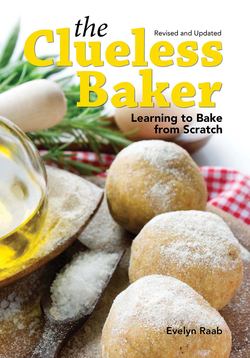Читать книгу The Clueless Baker - Evelyn Raab - Страница 57
ОглавлениеThe Truth About Gluten
Gluten is a stretchy protein found in wheat and other grains, such as oats and rye. This is what gives bread its spongy texture and allows a loaf of bread to hold itself up as it rises. When we knead the dough, we develop the gluten structure, causing the fibers to stretch and strengthen. In bread, this is a good thing. So flour with a high gluten content — made from “hard wheat” — is best for that purpose.
Flour made from “soft wheat” has a lower gluten content and is best for baking more delicate things, such as pastries and light cakes. You’re looking for fluffy and fragile, rather than sturdy and chewy.
All-purpose flour is somewhere in between on the gluten scale. It has enough gluten to make a decent loaf of bread, but is still fine for baking cakes and pastries. Most of the recipes in this book call for all-purpose flour.
Some people can’t tolerate any gluten whatsoever in their diet and have to avoid all foods that contain wheat, rye, barley, oats and various other grains. Some recipes in this book are gluten-free or can be made gluten-free with specific ingredient substitutions, such as commercially produced gluten-free flour, ground nuts, potato starch or rice flour. So go ahead and experiment — you may just invent something wonderful!
